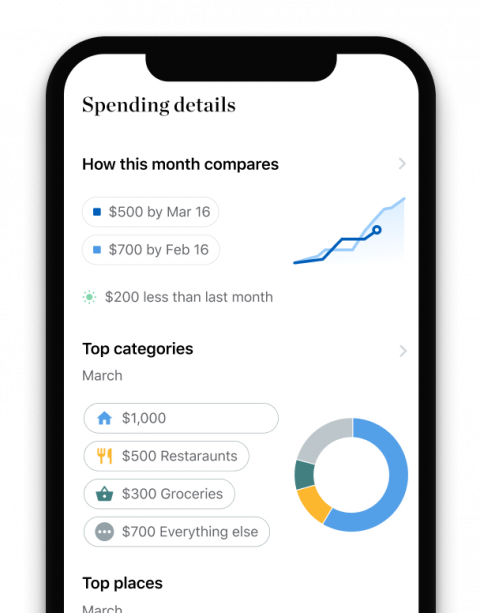Will Student Loans Take My Tax Refund?

Many or all of the products featured here are from our partners who compensate us. This influences which products we write about and where and how the product appears on a page. However, this does not influence our evaluations. Our opinions are our own. Here is a list of our partners and here's how we make money.
Find the latest
Manage monthly bills: Consider the new SAVE repayment plan
Punting payments for a year? Why you should think twice
Get your loans out of default: Sign up for the Fresh Start program
Student loan scams on the rise: How to protect yourself
If you default on a federal student loan, the government can take your tax refunds to help cover what you owe. However, the government has paused this program and other collection activities.
The Fresh Start program for borrowers with previously defaulted student loans will prevent withheld tax refunds through at least September 2024. And borrowers won’t newly fall into default as payments resume. The White House announced a 12-month student loan on-ramp from Oct. 1, 2023 to Sept. 30, 2024, during which any missed, partial or late payments won’t lead to delinquency or default.
After September 2024, the best way to stop student loan debt collectors from taking your refund is to address the default before filing your tax return. Once your money is gone, it's much harder to get it back.
Student loan refinancing from our partners

on SoFi
SoFi
5.0
NerdWallet rating
5.0
NerdWallet rating5.24% - 9.99%
650
on SoFi
on Earnest
Earnest
5.0
NerdWallet rating5.0
NerdWallet rating5.19% - 9.74%
650
on Earnest

on Splash Financial
Splash Financial
5.0
NerdWallet rating
5.0
NerdWallet rating6.64% - 8.95%
650
on Splash Financial
Will your tax refund be garnished?
Only federal student loans in default can subject your tax refund to garnishment. Federal student loans typically enter default after 270 days of past-due payments. However, if you are behind on your payments for 90 days, the loan servicer will report the delinquency to the three major credit bureaus, which could damage your credit rating. Private student loans in default aren't eligible for tax refund garnishment.
If your tax refund is subject to garnishment, you’ll receive a letter from your loan holder saying it has referred your account to the Treasury Offset Program, or TOP. This is the part of the U.S. Treasury Department tasked with taking federal payments to cover delinquent debts owed to government agencies, such as past-due child support and defaulted student loans.
Your student loan holder will send you a tax offset notice before your refunds are seized. This notice typically arrives months before you file your tax return, so you have time to take action. But you might receive that notice only once.
You can't dispute tax garnishment on the grounds of not receiving the offset notice. Check that your loan holder has your up-to-date contact information. To learn who your loan holder is, contact the Education Department’s Default Resolution Group or log into your account on studentaid.gov. The Treasury Department will contact you after the offset.
How to stop student loan tax garnishment
Collections activities resume on defaulted federal student debt in late 2024. Here are the best ways to stop student loan tax garnishment depending on your situation, as well as the records you’ll need to support each:
If you repaid some or all of the debt. If you already fully repaid the debt, you should receive your entire refund back. If the amount listed on your offset notice is incorrect, you may receive some money back depending on how much you still owe. Provide copies of checks or money orders used for payment to your student loan holder, as well as receipts for payments made.
If you do not owe the debt. Your student loan has been or will be discharged for reasons such as bankruptcy, total and permanent disability or school fraud. You'll need to provide copies of completed loan discharge applications or court documents and discharge orders to your student loan holder. If you never took out a student loan, don’t ignore an offset letter — It’s possible you’re a victim of identity theft.
If you already agreed to make payments. You have a formal agreement with your loan holder and made payments within 65 days of receiving your offset notice. If you are fulfilling that agreement — provide them a copy of it, as well as checks, money orders or receipts that document payments — your refund should be returned.
If you’re enduring financial hardship. Student loan holders have different standards for hardship relief. Some agencies may return all or part of your tax refund if you can prove you've exhausted unemployment benefits or had your house foreclosed, for example. To qualify, most will want you to start the rehabilitation process or voluntarily enter a repayment plan.
Once an offset notice is sent, you have 65 days to contest it. You may still be able to stop an offset after 65 days by entering into a rehabilitation agreement and making five of the nine required payments.
Your offset notice will list instructions for setting up a review. If you have questions about this process, you can also contact the TOP directly at 800-304-3107.
If your student loans were in default before the pandemic
Collection activities are currently paused for all federal student loans through September 2024, which should protect your 2022 and 2023 federal and state tax refunds.
But you may need to take action. The Education Department is temporarily allowing borrowers with loans in default to re-enter a repayment plan in good standing, through the Fresh Start program.
Some Fresh Start benefits, like paused tax withholding, are automatic for all borrowers with defaulted student loans through September 2024. But eligible borrowers must actively enroll in Fresh Start to make the protections permanent and get their loans back into good standing. Borrowers have until August 31, 2024 to claim their Fresh Start, but they should start the process – which can take less than 10 minutes – as soon as possible.
What happens if you don't stop a tax offset?
Your student loan holder will be able to seize your refund — and your future refunds — until the tax offset stops.
After the Fresh Start enrollment period ends, you can get federal student loans back in good standing through traditional rehabilitation and consolidation, which will also stop other consequences of default like wage garnishment. Rehabilitation takes longer to complete, but you don’t have to finish the process to prevent future garnishment. You just have to make payments in line with your agreement.
If you missed your review window or already had your refund seized, you should still contact your loan holder to see under what circumstances you can receive some or all of your money back – each can have its own policies for these situations.
Will my spouse’s refund be garnished, too?
If you’re married and file taxes jointly, you may be able to protect your spouse’s part of the federal tax refund by submitting an injured spouse allocation form (IRS Form 8379).
You can provide this form when you file your taxes or afterward if you weren’t aware of the offset at the time. You may have as long as three years from the due date of your original return to submit this paperwork.
You may also be able to prevent student loan tax garnishment for your joint state return. Those rules depend on where you live. Check with your state’s department of taxation to learn more.
Student loan refinancing from our partners

on SoFi
SoFi
5.0
NerdWallet rating
5.0
NerdWallet rating5.24% - 9.99%
650
on SoFi
on Earnest
Earnest
5.0
NerdWallet rating5.0
NerdWallet rating5.19% - 9.74%
650
on Earnest

on Splash Financial
Splash Financial
5.0
NerdWallet rating
5.0
NerdWallet rating6.64% - 8.95%
650
on Splash Financial




